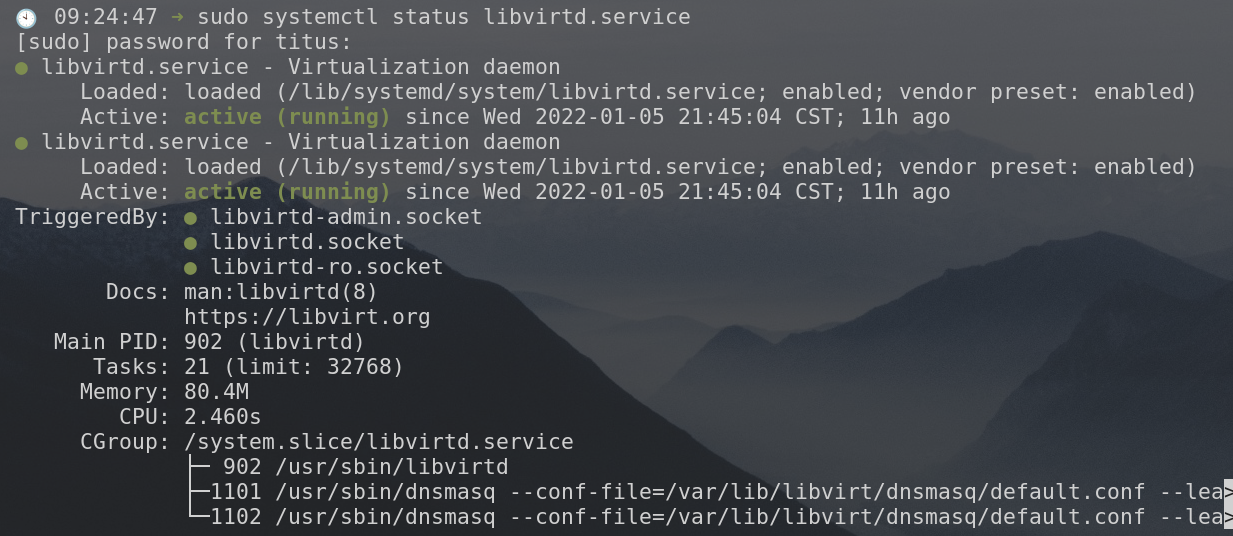Check Virtualization Extension
Run this command to make sure you’ve enabled virtualization in on your computer. It should be above 0
titus@debian:~$ egrep -c '(vmx|svm)' /proc/cpuinfo
12
If the output is zero then go to bios settings and enable VT-x (Virtualization Technology Extension) for Intel processor and AMD-V for AMD processor.
Install QEMU and Virtual Machine Manager
titus@debian:~$ sudo apt install qemu-kvm libvirt-clients libvirt-daemon-system bridge-utils virtinst libvirt-daemon virt-manager -y
Verify that Libvirtd service is started
titus@debian:~$ sudo systemctl status libvirtd.service
**
Start Default Network for Networking
**
VIRSH is a command to directly interact with our VMs from terminal. We use it to list networks, vm-status and various other tools when we need to make tweaks. Here is how we start the default and make it auto-start after reboot.
titus@debian:~$ sudo virsh net-start default
Network default started
titus@debian:~$ sudo virsh net-autostart default
Network default marked as autostarted
Check status with:
titus@debian:~$ sudo virsh net-list --all
Name State Autostart Persistent
----------------------------------------------
default active yes yes
Add User to libvirt to Allow Access to VMs
titus@debian:~$ sudo adduser titus libvirt
titus@debian:~$ sudo adduser titus libvirt-qemu
Reboot and you are Finished!
